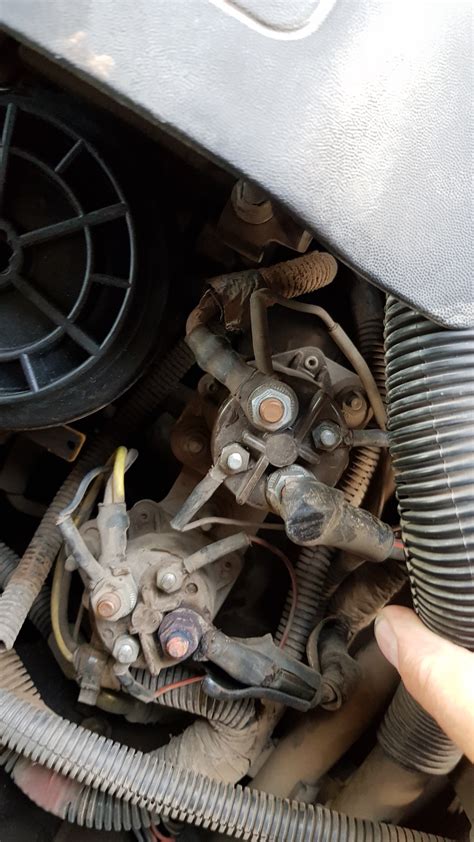How To Tell If Glow Plug Relay Is Bad
Ronan Farrow
Apr 02, 2025 · 3 min read

Table of Contents
How to Tell if Your Glow Plug Relay is Bad
A malfunctioning glow plug relay can leave you stranded, especially in cold weather. Understanding the symptoms and how to diagnose a bad glow plug relay is crucial for maintaining your diesel vehicle. This guide will walk you through the common signs and provide troubleshooting steps to help you determine if your glow plug relay needs replacing.
Common Symptoms of a Bad Glow Plug Relay
Several telltale signs indicate a failing glow plug relay. Knowing these symptoms can help you catch the problem early and prevent more serious engine issues.
Difficult Starting (Especially in Cold Weather):
This is the most common symptom. If your diesel engine struggles to start, particularly when the temperature is low, a faulty glow plug relay is a prime suspect. The relay is responsible for supplying power to the glow plugs, which preheat the engine cylinders to aid combustion. If the relay fails, the glow plugs won't receive sufficient power, making starting difficult or impossible.
Check Engine Light:
A check engine light illuminates when the car's computer detects a problem. While a check engine light doesn't always indicate a bad glow plug relay, it’s often one of the components the diagnostic trouble codes (DTCs) point to. Have the code scanned by a mechanic or using an OBD-II scanner to pinpoint the exact issue.
No Glow Plug Light:
Many vehicles have a glow plug indicator light on the dashboard. This light illuminates when the glow plugs are heating up. If the light doesn't come on, or turns off prematurely, it could be a problem with the relay's ability to activate the glow plugs.
Clicking Noise:
You might hear a clicking sound coming from the relay itself, usually located near the battery or under the hood. This clicking often indicates the relay is struggling to engage or disengage properly, signaling internal failure.
How to Test Your Glow Plug Relay
Testing a glow plug relay involves some basic electrical checks. Always disconnect the negative battery terminal before attempting any electrical testing. Improper procedures can lead to injury.
Caution: Working with vehicle electrical systems requires some basic knowledge and caution. If you are not comfortable with this type of task, it's best to consult a qualified mechanic.
Visual Inspection:
Begin by visually inspecting the relay. Look for any signs of physical damage, such as burning, corrosion, or loose connections. A damaged relay is likely faulty and will need to be replaced.
Using a Multimeter:
A multimeter is the most reliable way to test a glow plug relay. Refer to your vehicle's repair manual for the exact location of the relay and its wiring diagram. Once located, follow these steps:
-
Check for Power: With the ignition on, use your multimeter to check for voltage at the relay's power supply terminals. There should be a 12-volt supply.
-
Check the Coil: With the ignition off, test the continuity of the coil. There should be a low resistance reading.
-
Check the Switch: This test verifies that the relay is switching power correctly. Turn the ignition on and measure the voltage across the relay's output terminals. The voltage should be present indicating the relay is working.
If the relay fails any of these tests, it should be replaced.
Replacing the Glow Plug Relay
Replacing the relay is usually a straightforward process. Consult your vehicle's repair manual for specific instructions. Generally, it involves:
-
Locating the relay: Identify the glow plug relay in your vehicle's fuse box or under the hood.
-
Disconnecting the wiring harness: Disconnect the wiring harness connector from the relay.
-
Removing the old relay: Remove the old relay from its socket.
-
Installing the new relay: Insert the new relay into the socket.
-
Reconnecting the wiring harness: Reconnect the wiring harness to the new relay.
By following these steps, you can significantly increase your chances of determining whether your glow plug relay is at fault and taking the necessary steps for repair. Remember, if you’re uncomfortable performing these tests, it's best to seek the assistance of a qualified mechanic.
Featured Posts
Also read the following articles
| Article Title | Date |
|---|---|
| How To Tell If Chevy Bolt Battery Has Been Replaced | Apr 02, 2025 |
| How To Reset Stabilitrak On Chevy Silverado | Apr 02, 2025 |
| How To Survive As A Player Chapter 8 | Apr 02, 2025 |
| How To Start Canna Bulbs Indoors | Apr 02, 2025 |
| How To See Into The Spiritual Realm | Apr 02, 2025 |
Latest Posts
-
How Big Of A Blackstone Do I Need
Apr 03, 2025
-
How Big Is The Bed On A Jeep Gladiator
Apr 03, 2025
-
How Big Is St Lucia Compared To A Us State
Apr 03, 2025
-
How Big Is Rt 44 At Sonic
Apr 03, 2025
-
How Big Is North Korea Compared To Texas
Apr 03, 2025
Thank you for visiting our website which covers about How To Tell If Glow Plug Relay Is Bad . We hope the information provided has been useful to you. Feel free to contact us if you have any questions or need further assistance. See you next time and don't miss to bookmark.
